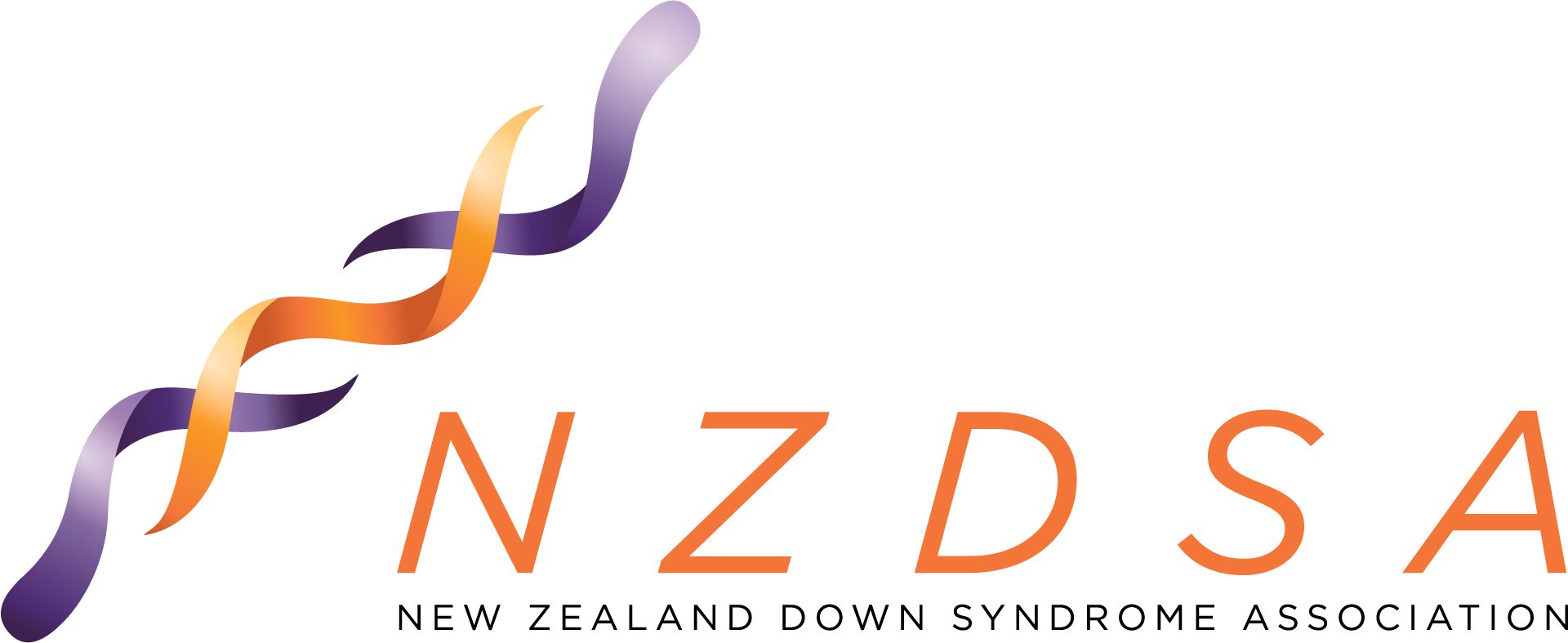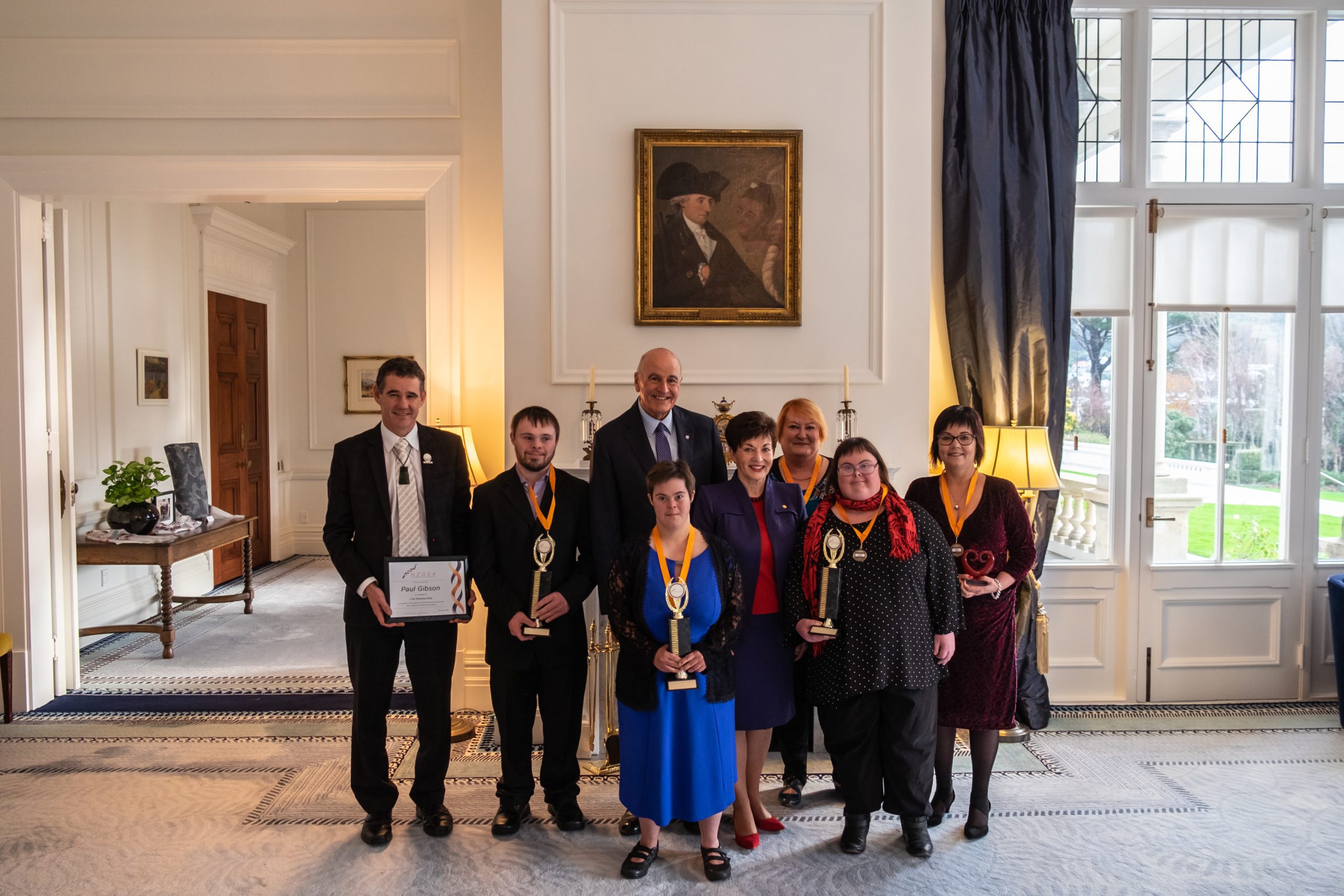As the New Zealand Down Syndrome Association is heading into its 40th year, an effective and strong representation of the Down syndrome community is getting more important with each year.
The NZDSA was founded in 1981, initially to support parents caring for a person with Down syndrome, but over the years this role has expanded rapidly to become a multi-faceted support and advocacy organisation.
The volunteers and part-time staff that keep the wheels of the NZDSA turning are now recognised as key stakeholders in the most crucial discussions and decisions impacting on our community at a national and international level.
“We are recognised as an important parent organisation and a significant part of our work now involves stakeholder meetings that involve policy change and advocacy at Government level,” says Zandra Vaccarino, the National Executive Officer of the NZDSA.
Zandra, President Kim Porthouse and other members of the National Committee are in regular contact with the organisations that play a vital role in the lives of people with Down syndrome, like the Ministries of Health, Education, Disabilities, and Social Development.
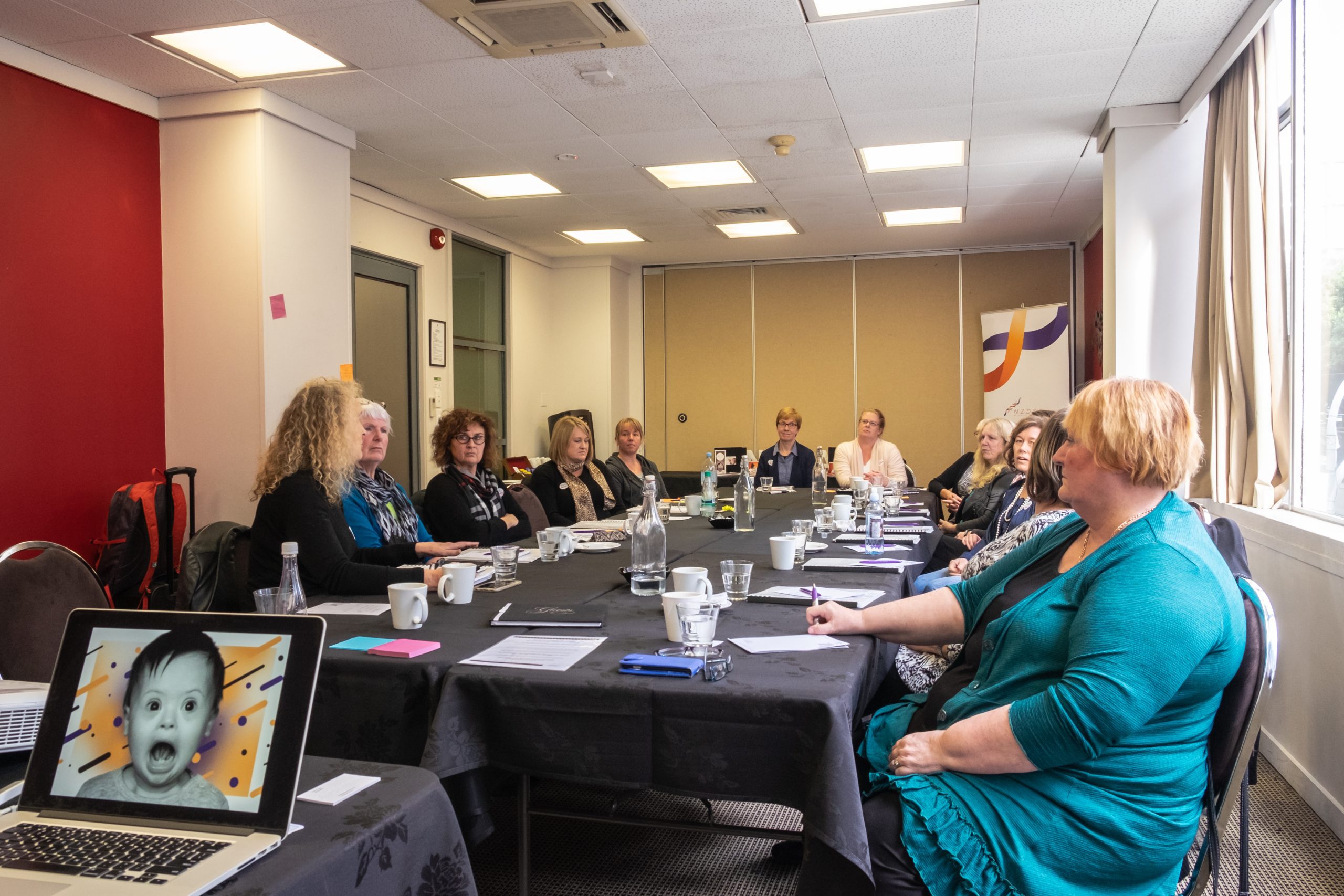 NZDSA staff meet with regional representatives.
NZDSA staff meet with regional representatives.
“In some cases, we just keep advocating for years until they start listening to us,” says Zandra, who has been the face of the NZDSA at Government forums for the past 16 years.
The NZDSA also has a long representation on the National Screening Unit to discuss the practical and ethical challenges around increased screening for Down syndrome, while Zandra also works with Human Rights Commission, the Health and Disability Commission and the Disability Transformation Steering group.
STRIVE self-advocate Andrew Oswin and committee member Averill Glew also represent a strong NZDSA voice in the Disability Consumer Consortium, which represents all key stakeholders in the disability sector.
“The NZDSA has a big voice in all these advisory and decision-making bodies, but it is vital that we represent everyone in our community. We encourage every person and family with Down syndrome to become an NZDSA member, so we know exactly who we represent in those discussions,” says Zandra.
“And the more people we represent, the bigger our voice is and the harder it is for any agency to ignore us.”
Unfortunately, the Government does not keep any comprehensive records of people with Down syndrome in New Zealand, who they are, where they live or what challenges they might be facing, individually or collectively.
“We only have records of how many children with Down syndrome are born in hospital, which has been roughly between 52-58 each year, but after that it becomes guess work. So we are really working hard to build our contact list, so we can find out exactly where our community is and what we can do to support them.
“That’s why signing up to the NZDSA through our website (www.nzdsa.org.nz) is so important, so we can understand what you need and give you the information that is relevant to your situation.”
Zandra admits the limited resources of the NZDSA makes it difficult for the national body to provide advocacy support on an individual basis when parents need support dealing with a school, a doctor or an agency, but the association will know where families can get local support.
“We may not be able to go into a school with a parent, but we provide them with local contacts in our own community, a regional representative, or sometimes IHC.
“In many cases, however, we are able to provide parents with tips and strategies to upskill the parent, so they can deal with the issues themselves. Being able to empower a parent is one of the most powerful parts of our job.”
The NZDSA was created to support parents, which is still at the heart of their mission, but these days the focus has also shifted to empowering the person with Down syndrome and teach them how to advocate for themselves.
The NZDSA organises regular self-advocacy workshops in which its members receive specialist training to teach them about their rights and how to advocate for their own rights, as well as others.
The STRIVE group of self-advocates includes a six-person Advisory and Leadership Group who provide invaluable advice to the National Committee, as well as nine other self-advocates who are gaining new skills to potentially move into leadership roles.
“These people are the most powerful ambassadors of our community. They are all confident, articulate and go out in their own communities to represent the wider New Zealand Down syndrome community,” says Zandra.
Many of the STRIVE members have also taken part in the annual NZDSA youth camps, either as participants or as a support person.
The Youth Camp at the Sir Peter Black Marine Education and Recreation Centre in Long Bay is an annual highlight on the NZDSA calendar. “Each year, the NZDSA invites young people nominated by each region to join a weekend of adventure and fun,” explains Zandra.
“At the camp they make new friends, learn new skills and build their confidence.”
The Youth Camp is supported by volunteers from each region, which enables these regional representatives to share experiences and become part of the national network.
The camp alternates between a camp with more independent young people who are happy to travel without their parents, while every second camp focuses on young people with higher needs who require regular support from a caregiver.
“But we really want the camp also to be a real respite weekend for those parents who are on duty 24/7. Where possible, NZDSA volunteers take over the care of the youngsters during the activities, so the parents can relax, go out for a coffee or wine, and participate in other activities for the parents, as well as sharing experiences with other parents who have children with very high needs.”
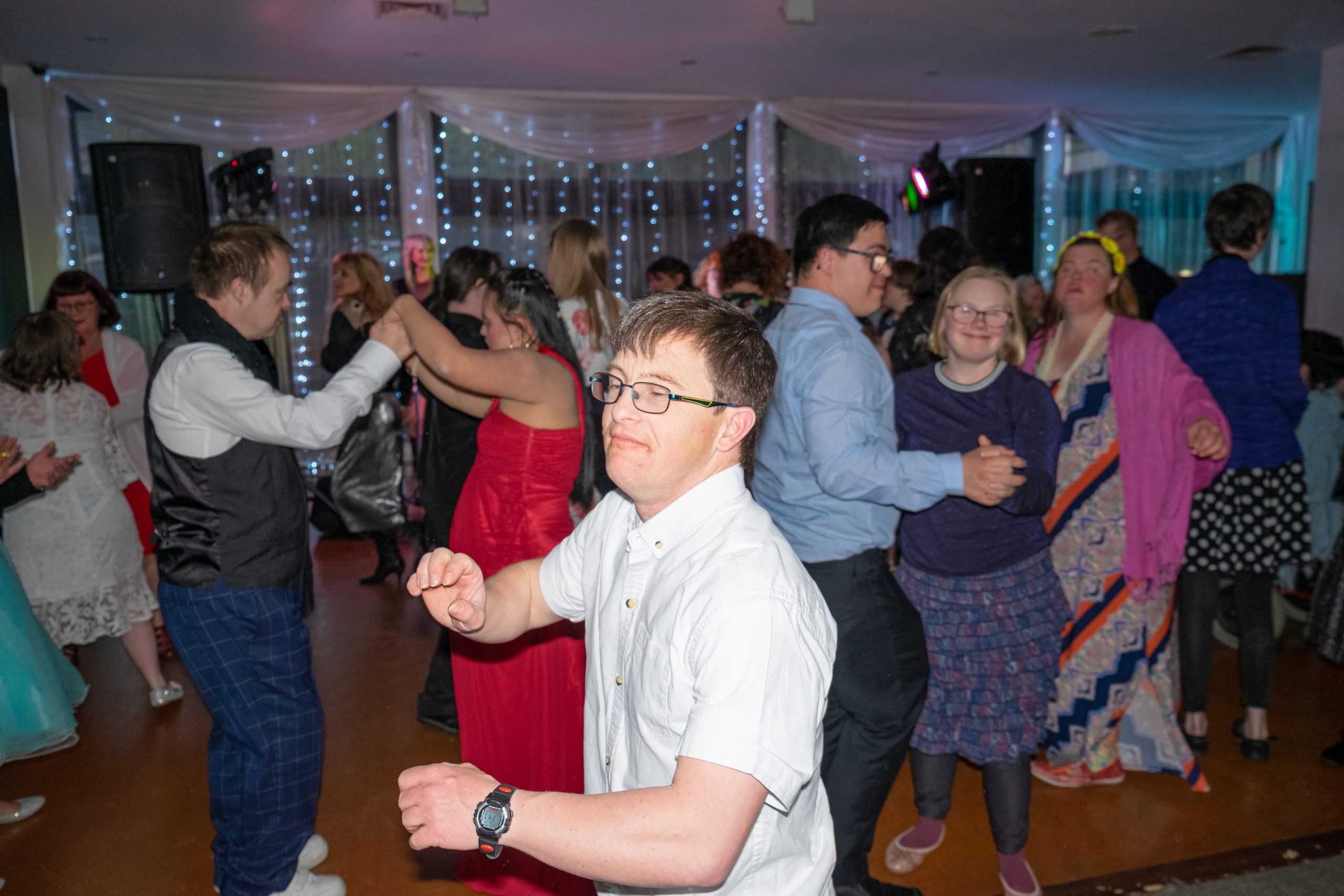 The NZDSA ball in Auckland in December.
The NZDSA ball in Auckland in December.
Aside from the work by the NZDSA, the Down syndrome community is also fortunate to have strong local support groups in many regions that provide boots on the ground for support, advocacy, social contacts and information.
The NZDSA committee is made up of representatives from the six zones, who liaise with their own regions and representatives from the local Down syndrome groups.
The committee has regular meetings, in person or by Zoom, to discuss current issues the NZDSA needs to be involved in and to receive feedback and ideas from the regions.
Zandra says that the interactions are a two-way street, where the NZDSA in some cases refers inquiries to the regions, while in other cases the regions contact the NZDSA to get the support they need.
“Our National Administrator Linda te Kaat takes many of those calls. We call her Detective Linda because if she does not have the answers, she will keep digging until she has found the best person or organisation to help out,” laughs Zandra.
“And we don’t just give out a number, but we will contact that organisation first to find out if they are the best people to help our members.”
Linda te Kaat also manages a large pool of resources that are available for NZDSA members, like Numicon kits, educational DVDs on several themes, and distributes the new parent packs for new parents of children with Down syndrome.
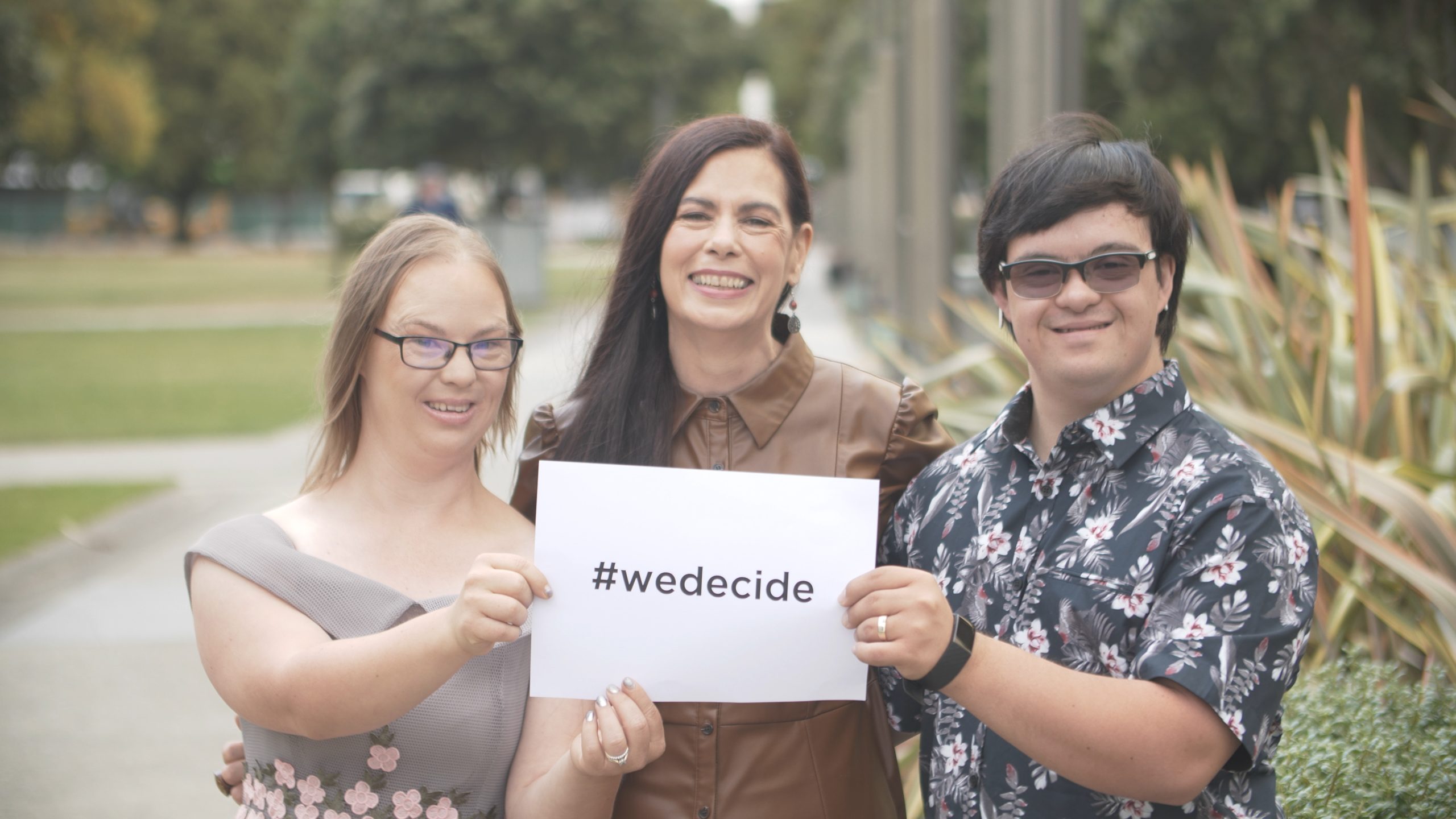 Zandra Vaccarino with her son Vincent and his wife Rachel.
Zandra Vaccarino with her son Vincent and his wife Rachel.
Aside from its advocacy and information roles, the NZDSA has been organising or has been part of numerous workshops on a host of issues like health, education, ageing, self-advocacy, employment or human rights.
“In some case they are just for our community, but in many workshops we work closely with other organisations in the disability sector. We think it is important for us and our members to build communities of people who face the same challenges,” says Zandra.
Those connections are not just restricted to our shores, as the NZDSA also collaborates with international groups like Down Syndrome International (DSI) and Inclusion International. The NZDSA staff are in regular contact with their key counterparts overseas, especially in Australia.
The NZDSA staff take part in virtual conferences, including the Asia Pacific Down Syndrome forums, and if the NZDSA is able to secure funding support, they attend the World Down Syndrome Conference every two years in person, to share the latest research and developments with the regions and to continue building international connections.
In the lead-up to World Down Syndrome Day, the NZDSA works closely with DSI to support the annual theme the international community chooses for that year.
“Most years we have created a special video on that theme that we distribute to the community, to media and through our social media platforms to celebrate people with Down syndrome and raise awareness around New Zealand,” says Zandra.
The NZDSA Facebook page has a large following, inside and outside the Down syndrome community, but is just one of several communications tools it uses to communicate with its own families, as well as other stakeholders like educators, Ministries and health professionals.
“The NZDSA recognises that communicating and connecting our community is the most important part of our role, so we have invested in a part-time communications advisor, who is also the editor of our quarterly journal CHAT 21,” says Zandra.
“He works closely with our Social Media Officer to connect through social media and put out a regular E-newsletter to all our contacts, as well as looking for media opportunities for stories around Down syndrome,” says Zandra.
She explains that the NZDSA uses those communications platforms to share their own news, but also support the regions by promoting regional news and events by sharing it with all their contacts.
“All the different regions are doing an amazing job helping our families, and are often best placed because of their local connections, so our role is to provide a connection between the regions, support them where we can, and represent them at a national level.
“But we are only as good as the feedback and support we get from everyone in the regions. “So we are working hard to find and connect with every family in New Zealand, be more visible to our community, so we can represent them more effectively.”
